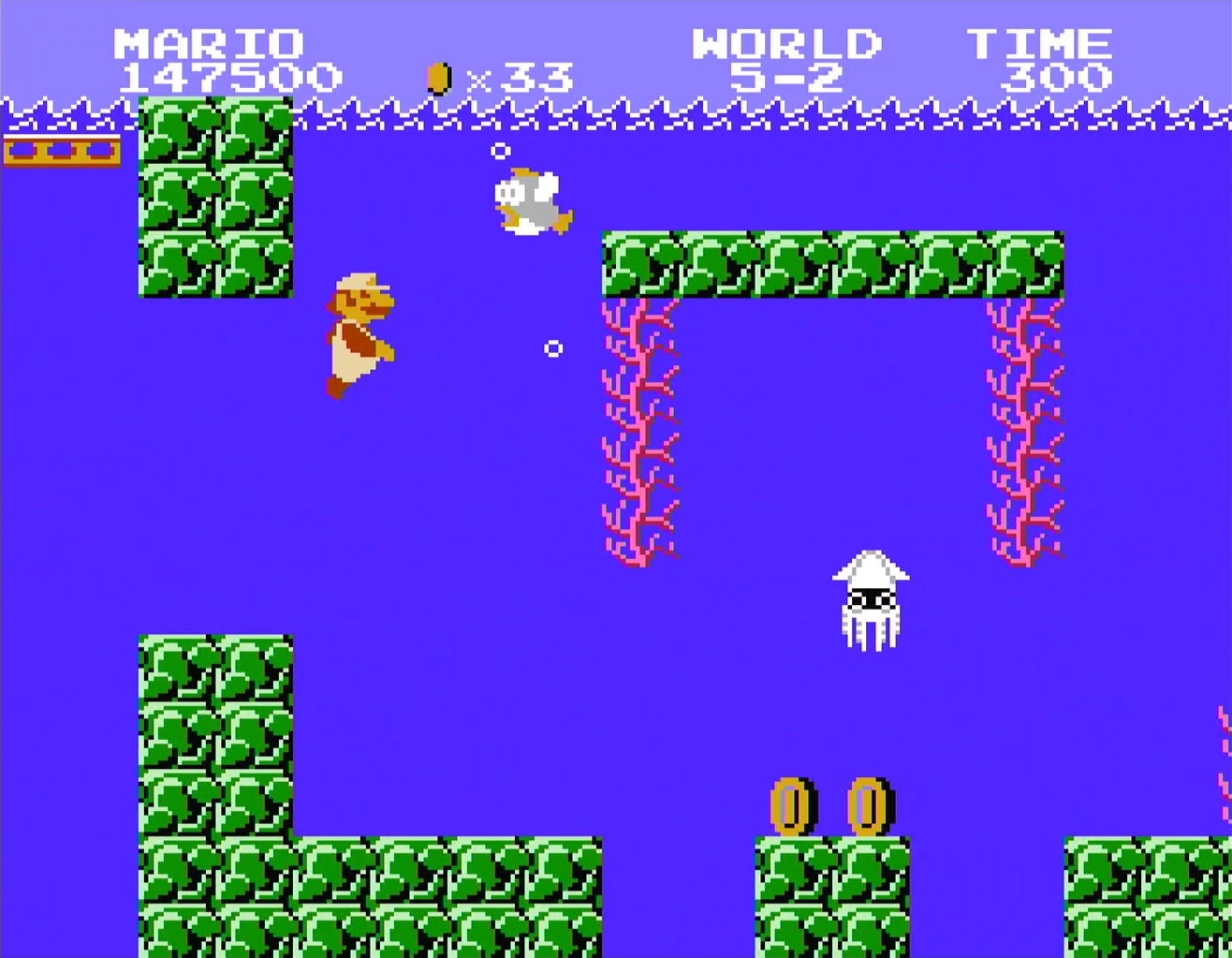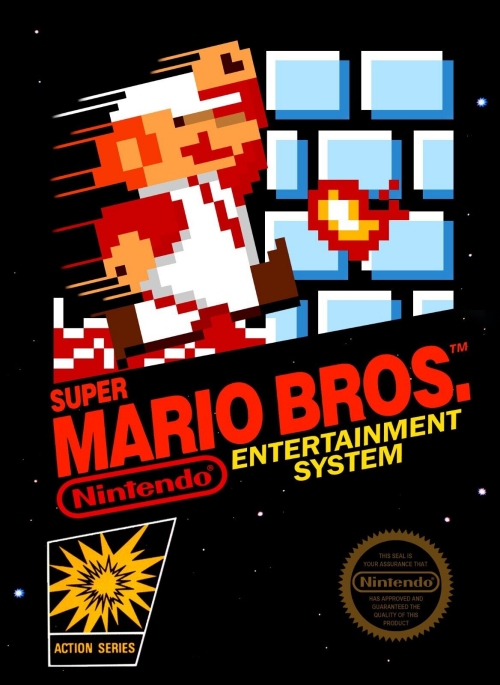In the latter half of the 1980s, just about every kid in my middle school had a Nintendo Entertainment System, or at least it felt so at the time. I may have been one of the few whose console didn’t come pre-packaged with a copy of Super Mario Bros. (Mine was bundled with Konami’s Rush’n Attack instead.) In fact, I never owned a copy of the game at all during the NES era. Nevertheless, I borrowed it from friends and rented it from the local video store enough times to play through every level until I’d practically memorized the whole thing. I was not an outlier in this by any means. Playing Super Mario Bros. for hours on end was a huge part of young life in those days, just as playing the countless sequels and spinoffs to follow would be for generations of kids now four decades and counting.
The goofy Italian plumber named Mario was first introduced as hero of the 1981 arcade classic Donkey Kong. He returned, bringing along a brother named Luigi, in Mario Bros. a couple years later. Both games were big hits, enough so that Nintendo made Mario the company mascot and centerpiece of all its marketing in 1985 when launching the Famicon console in Japan, quickly followed by an American version called the Nintendo Entertainment System. The device was of course a massive success, often credited with reviving the entire video game industry after the great market crash of 1983. The popularity of launch title Super Mario Bros. was instrumental in selling tens of millions of consoles and entrenching video games as a mainstream obsession for players of all ages.

| Title: | Super Mario Bros. |
| Year of Release: | 1985 |
| Publisher: | Nintendo |
| Gaming Platform: | NES |
If simplistic by modern gaming standards, the original Super Mario Bros. was quite a complex achievement for its time. The game had dozens of unique levels and an actual story with a plot for players to follow. Even after finishing it, levels were inundated with secrets and surprises waiting to be uncovered on replays. I remember poring over the pages of Nintendo Power magazine, studying level maps to learn about all the hidden bonuses, secret passages, and shortcuts I’d missed in my own playthroughs. This gave the game enormous replayability.
The story sounds crazy when described in writing, but is just the perfect degree of whimsical to fire up a player’s imagination. After crawling through a pipe, heroic plumber Mario is transported to the magical Mushroom Kingdom and must rescue the kidnapped Princess Peach from the clutches of an evil dragon named Bowser. To do so, Mario stomps on Bowser’s countless weird creature minions, repeatedly smashes his head through bricks, and eats magical mushrooms that double his size and allow him to throw fireballs.
The game is a side-scrolling adventure divided into eight “worlds” of four levels each. Most levels find Mario doing a lot of running, jumping, and stomping, but mixed in with these are a few underwater stages he must swim through while avoiding fish and squids. At the end of each of the first seven worlds, Mario traverses through a castle and fights a fake Bowser decoy, only to rescue a handmaiden who frustratingly informs him, “Thank you Mario! But our princess is in another castle!”

The “brother” aspect of Super Mario Bros. is only relevant during 2-player mode. Unfortunately, the characters cannot play simultaneously. The first player will navigate the game as Mario until losing a life, upon which the second player starts from the beginning as Luigi (basically the same character sprite in a differently colored outfit). The two will then trade turns back and forth with each lost life.
The graphics are a bit primitive even in 8-bit terms, but are very colorful and creative. The controls and physics are quite tight, once you accept that Mario has a superhuman ability to leap twenty feet high and change direction in mid-air. The bouncy musical score is still super fun even after decades of cultural saturation. That said, levels do tend to grow repetitive the further you progress.
Back in the day, I played this game so much I used to be able to navigate every stage by muscle memory. I knew just about every hidden power-up and secret tunnel. While I still remember quite a few of them, a lot of of those details have faded from memory. In a way, playing it again now feels like a fresh experience. The downside to this is that I’m not as skilled at playing it as I used to be. I wish I could still get to the end, but presently, I usually stall out around World 6. I’m sure I’ll get there with more practice, but it may take some time.

Super Mario Bros. is one of the most iconic video games of all time. Unsurprisingly, its success spawned an extensive franchise of sequels and related titles featuring the characters. Even in the NES era, I think Super Mario Bros. 3 in particular refined and improved everything that worked about the original and was a superior game. That’s to say nothing about the various Mario Kart and Super Mario World entries on later consoles, which continue even to this day.
Unlike movie sequels, video games often get better with each new iteration as the technology advances – just as Super Mario Bros. itself was decidedly better than Mario Bros. or Donkey Kong before it. Even with that being the case, the original Super Mario Bros. remains a great game in its own right and is still an addictive blast to play today.


I started playing the Japanese ‘Super Mario Bros 2’ just last year (the so-called ‘Lost Levels’) and MAN is that game hard as funk. I’m currently stuck on World 7 – luckily, there’s an infinite amount of continues.
LikeLike